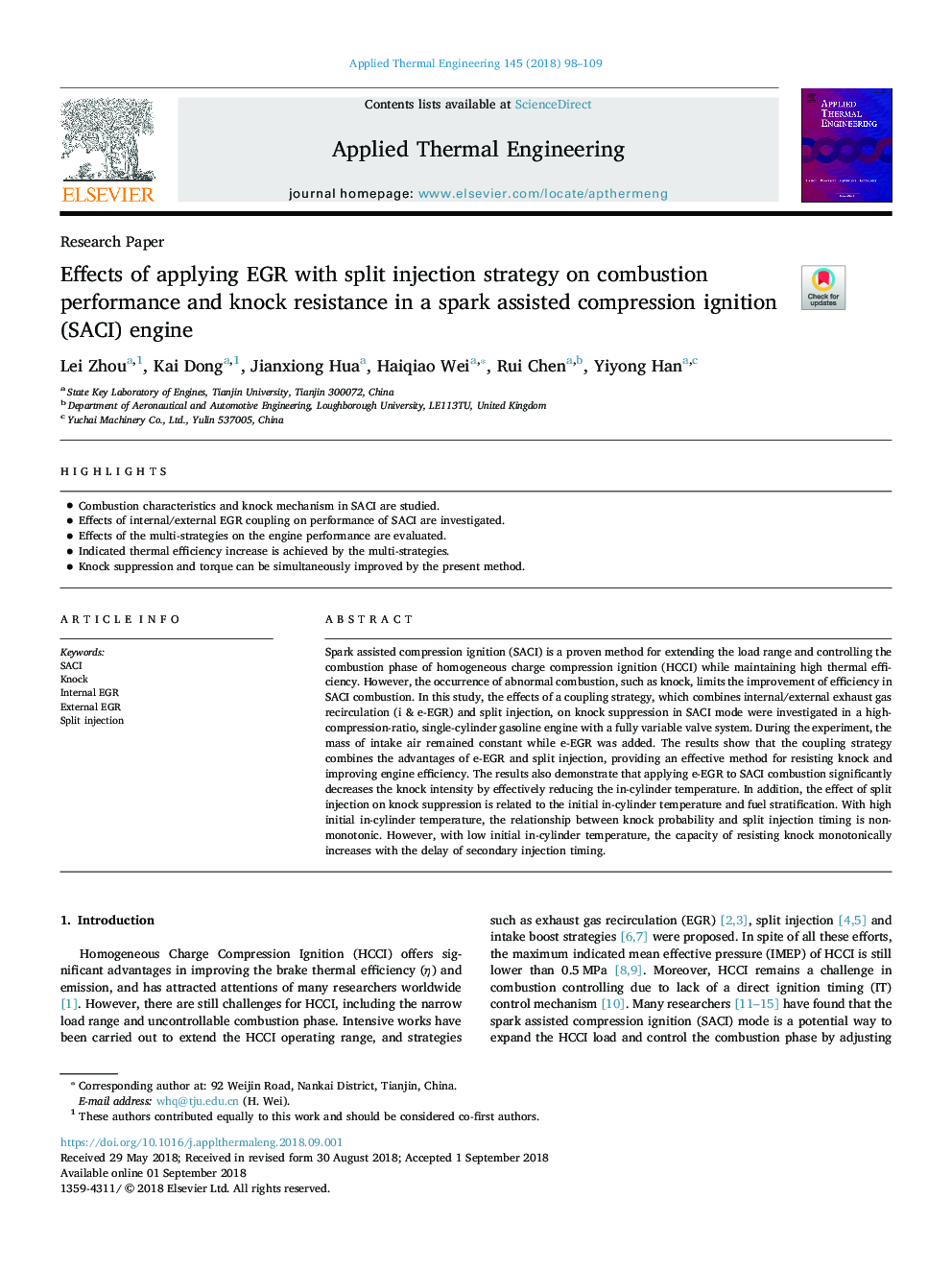| Article ID | Journal | Published Year | Pages | File Type |
|---|---|---|---|---|
| 10151940 | Applied Thermal Engineering | 2018 | 12 Pages |
Abstract
Spark assisted compression ignition (SACI) is a proven method for extending the load range and controlling the combustion phase of homogeneous charge compression ignition (HCCI) while maintaining high thermal efficiency. However, the occurrence of abnormal combustion, such as knock, limits the improvement of efficiency in SACI combustion. In this study, the effects of a coupling strategy, which combines internal/external exhaust gas recirculation (i & e-EGR) and split injection, on knock suppression in SACI mode were investigated in a high-compression-ratio, single-cylinder gasoline engine with a fully variable valve system. During the experiment, the mass of intake air remained constant while e-EGR was added. The results show that the coupling strategy combines the advantages of e-EGR and split injection, providing an effective method for resisting knock and improving engine efficiency. The results also demonstrate that applying e-EGR to SACI combustion significantly decreases the knock intensity by effectively reducing the in-cylinder temperature. In addition, the effect of split injection on knock suppression is related to the initial in-cylinder temperature and fuel stratification. With high initial in-cylinder temperature, the relationship between knock probability and split injection timing is non-monotonic. However, with low initial in-cylinder temperature, the capacity of resisting knock monotonically increases with the delay of secondary injection timing.
Keywords
Related Topics
Physical Sciences and Engineering
Chemical Engineering
Fluid Flow and Transfer Processes
Authors
Lei Zhou, Kai Dong, Jianxiong Hua, Haiqiao Wei, Rui Chen, Yiyong Han,
